At work, we all try to give the best of ourselves. We continually strive to improve and use our full potential in the execution of our tasks. Being efficient is part of us, of our society and of our need to always be on top. Many of us are perfectionists who don't want to deliver anything until it's "how we envisioned it".
The idea of perfection is beautiful. Until the day it starts to play against us. Our standards of excellence become so high that we find ourselves facing a wall that is almost impossible to overcome. We are anxious, we push back the deadlines and we end up shifting towards inaction. Time flies and opportunities disappear. Because we wanted to choose the perfect travel suit, we missed the train to get there.
What makes perfectionism lead to procrastination? Above all, how do we avoid this trap and manage to deliver our projects within a reasonable time? Below are 5 easy solutions to stop procrastinating at work while maintaining a high level of quality.
Exclusive online summit
·
May 23 2024
Moments that matter: how to seed great work
What's in this article
Am I a perfectionist?
When perfectionists realize that their results will not allow them to achieve their dream of excelling in an exceptional way, they react with a feeling of frustration, anger, depression or panic.
Louise Careau, a collaborating psychologist for the Help Center for students from Laval University, sees a distinction between quality and perfection. According to her, setting high-quality standards does not always mean being a perfectionist. It is important to understand that work can be done conscientiously without intending to be perfect. It is when expectations of yourself become unattainable that you should start to worry.
By ceasing to try making everything perfect, we are already relieving ourselves of an important source of stress. Accepting that you are no longer a perfectionist is the first step in releasing yourself from a burden that has been placed on you. Louise Careau presents the characteristics of a conscientious person who ensures a high degree of excellence without excess:
- Know how to balance your efforts and establish your priorities without neglecting the importance of details.
- Remain flexible and know how to adjust your own requirements according to the importance of the activity.
- Be self-critical, accept your own mistakes and try to correct them.
- Experience pleasure and satisfaction in carrying out your projects and in achieving your personal goals.
- Glimpse the future realistically and seek to prevent difficulties. If some arise, seek and implement solutions.
Imperfection and online training
At Workleap LMS, we hear a lot from our customers that they would like to do online training. However, very few of them do it, the others being held back by their desire for everything to be perfect. It is mistakenly thought that the container greatly affects the success of training, whereas it is rather the content.
The idea of online training being impeccable seems optimal, but it is not realistic. As a content creator, we sometimes get lost in wanting to show everything to our future students. Finally, the training is so complex that the students get confused and it misses the point. Simplicity is often the key to this problem.
Have no fear of perfection, you'll never reach it.
- Salvador Dali
Perfection versus procrastination
If perfectionism arises from a noble intention, it sometimes turns into an obstacle to effective work. Sometimes too absorbed in the quest for perfection, one becomes emotional and anxious, which leads to exhaustion. This fatigue can make us more disorganized, less reliable and less disciplined. If you want to do it too well, you end up doing nothing.
How does good intention cause procrastination?
According to behavioral psychology, temporal inconsistency is the phenomenon that makes us postpone our tasks until the next day. This concept explains that the human brain prefers immediate benefits over future benefits, even if there are fewer.
We also know that the hardest part is getting started. Generally, motivation is minimal when starting the task, but is easily maintained during execution. Knowing this, it is better to find strategies to make the benefits of beginning the task more attractive.
What seems most insurmountable in creating your online training is often to start. Here are 5 tips to help you avoid the procrastination trap and make your project a reality.
How to counter procrastination?
1. Change your way of thinking
When you are a perfectionist, you tend to be very self-critical and put a lot of pressure on yourself. Take the time to write down the negative thoughts that are holding you back and analyze them. Try to transform them so that they are more nuanced and objective.
The idea is to come to accept that your work can be conscientious without being 100% perfect. Either way, what's perfect for you may not be perfect for everyone. You might as well learn to put the situation into perspective by yourself.
2. Bring future benefits closer to the present moment
By finding a way to make the benefits more meaningful in the present, it's easier to avoid procrastination. A popular technique for making a situation pleasant is to combine it with something that makes us feel good. The format is as follows:
Only [action that we like] when [action that we often postpone].
Here are some examples:
- Only [eat sushi for dinner] when [I add a new module to my online course].
- Only [go get me a coffee] when [I filmed a video for my course].
- Only [listen to my favorite podcast] when [I publish my course].
3. Set realistic, flexible and actionable goals in the short term
Make sure your goals are accessible and achievable. You can divide a goal into small blocks to more quickly feel the satisfaction of the work accomplished. More success comes with more self-confidence, and therefore more motivation. Small progress measures help maintain your performance over the long term, and therefore encourage productivity and efficiency.
Examples of simple objectives to create your online training :
- Create my Workleap LMS platform and adjust all the parameters
- Gather all the existing documentation and scan it, if necessary
- Create a training structure and attach my existing documentation to it
- Improve the format of the content in module 1
- …
4. Prioritize the most important actions
It is one thing to know what to do, it is another to know where to start. If you decide the same day, chances are that you will do the tasks that tempt you the most first. How to avoid this?
Make your to-do list the day before for the next day, limiting yourself to 3 or 5 actions. Put them in order in advance, that way you will know exactly where to start at the beginning of the day. Go through your list step by step, avoiding doing more than one task at a time to keep the focus.
You can’t be great at one task if you’re constantly dividing your time ten different ways. Mastery requires focus and consistency.
- James Clear
You can also consider creating content in Agile mode.
5. Ask for feedback as you go
Rather than waiting for complete and perfect online training to make it available, create a test group. Unblock access to your content for certain users during its creation process. Even if it is not finished, they will be able to give you valuable feedback. This will help you determine what are the real priorities and thus move faster and more efficiently. You can use Workleap LMS' questionnaire tool to assess your training directly on the platform!
Will these tips help you stop procrastinating? If so, it's time to take action! Create an online training platform now.
Discover, manage, and grow your team’s skills to unleash their potential and retain your rising stars.




